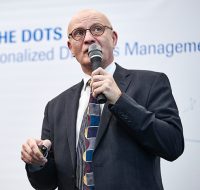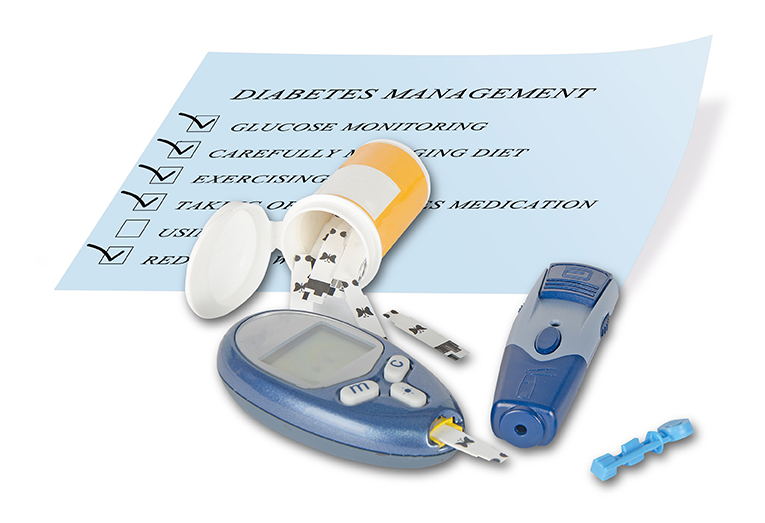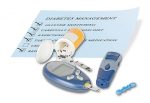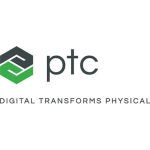Approximately one in 10 adults in Asia have diabetes, according to the latest estimates from the International Diabetes Federation (IDF). Out of 463 million people living with diabetes worldwide, one in four come from China, and one in six from India. Even more concerning however, is that we are now on pace to reach 700 million people with the chronic disease by 2045.1
At the biennial IDF Congress last month, global diabetes experts convened in Busan, Korea to discuss the current issues and challenges they are facing with in diabetes management, and the latest innovative drug and medtech solutions that companies have been developing to help stem the tide of diabetes in Asia.
Out of control
One of the reasons why type 2 diabetes, which accounts for 90% of all diabetes, is quietly becoming more prevalent is because patients are often asymptomatic. Consequently, about 56% of patients in the Western Pacific and Southeast Asia region do not actually know they are living with the disease.1
Even for those who have been diagnosed, about half of them struggle to meet their glycemic targets of keeping their HbA1c, a measure of blood glucose level, under 7%. Part of the problem is that, despite our continual efforts in developing better anti-diabetic medicines and drug delivery systems, patients still do a lot of guesswork when it comes to trying to keep their blood glucose levels within a normal range. For patients who require insulin injections, a dose too small won’t be enough to prevent hyperglycemia, but a dose too big could lead to hypoglycemia, both potentially life-threatening conditions.
“Modern drugs and technology alone do not automatically help patients to reach their therapy goal,” Rolf Hinzmann, M.D., Ph.D., head of global medical and scientific affairs of glucose monitoring and science at Roche Diabetes Care, told media members during a presentation.

Living with a chronic condition also means that patients need to manage the disease themselves between their regular doctor appointments, which represents the majority of the time. “Patients on average only spend two hours per year with their physician,” according to Julia Mader, M.D., associate professor of medicine in endocrinology and diabetology at the Medical University of Graz in Austria.
“For the rest of the year, those 8760 hours, the patient has to deal with his diabetes alone. We need to make sure that patients know what to do and how to react in certain conditions when they are caring for their diabetes themselves,” Mader said.
To effectively combat the growing diabetes epidemic, experts agree that the future standard of care in Asia must go beyond telling patients to eat less sugar, do more exercise, and remember to take their medications.
Patients, physicians and the healthcare system all play important roles in making diabetes management more effective. We need a solution that addresses all relevant factors in the patient journey, such as an integrated personalized diabetes management (iPDM) approach, Hinzmann explained.
Integrated Personalized Diabetes Management
iPDM is a patient-centric, holistic approach that aims to collect and integrate all disease-relevant data points into a single platform, to help physicians and other stakeholders make better treatment decisions that can be personalized for each patient.
In the past, physicians relied on patients to keep a diary of their blood glucose measurements between doctor visits to help them make ongoing treatment adjustments. This approach not only fails to account for other important factors in diabetes management (such as lifestyle modifications), record-keeping can be tedious especially for older patients, so records are often incomplete and inaccurate.
“It’s always a challenge to look into the data in quality. Because with the diary, it might be tricky for us to really interpret what the patient has done and what should be subsequently done with those adjustments,” Mader said.
By capturing and consolidating relevant data points from all of the patient’s diabetes management devices, healthcare professionals can closely observe and analyze their patient’s diabetes journey over time to help them make better clinical decisions. Data can come from a number of touchpoints, such as blood glucose monitoring devices, injections from insulin pumps, continuous monitoring devices with sensors inserted under the skin, electronic medical records from hospitals, and even third-party smartphone apps that patients use to self-record meal intakes or exercise routines.
“When we have the technology, it is great if that technology can automatically incorporate their data into a bigger information system that can then even communicate with the doctor so we could not only have the glucose values and meal pictures and meal sizes, but also the automatic documentation of insulin doses,” Mader added.
To test whether an iPDM approach improves the clinical outcome of patients, researchers conducted a study in which more than 900 type 2 diabetes patients and 100 physicians were randomized into two groups.2 Patients in the control group continued to receive their usual standard care, while patients in the iPDM group followed a structured iPDM approach, which involved patient education on diabetes and self-monitoring, regular self-measurement and documentation of blood glucose level, the sharing of data to a data platform for systematic analysis, following a personalized treatment plan based on the analysis and discussions with their physician, and subsequent follow-up visits to the physician’s clinic to assess treatment effectiveness.
After 12 months, patients in the iPDM group experienced better glycemic control with greater blood glucose reduction compared to those in the control group, and physicians reported patients had better treatment adherence and satisfaction.2

According to Hinzmann, Roche Diabetes Care has been developing solutions that can integrate different types of data coming from different sources. If a patient agrees to share his data, the system can automatically record and send data to his physician’s data platform from his devices. With the latest diabetes management technologies slowly being rolled out across Asia, patients can now monitor their own blood glucose levels more accurately with continuous glucose monitoring devices, on a weekly, daily, or even hourly basis.
By making the use of artificial intelligence and machine learning, a centralized data platform can perform data analytics and behavioral analysis to generate valuable insights that can support the doctor’s ongoing treatment decisions. Patients can benefit from predictive alerts from their smartphone apps to know when their blood glucose levels are trending out of normal range, and they can also share the data and insights with other stakeholders such as family members, nurses or caregivers, so that they can stay informed of his diabetes management.
Challenges in Asia
To combat the growing diabetes epidemic in Asia, innovative solutions need to be effective for the local healthcare landscape. With larger populations and limited resources put into the healthcare system, accessibility becomes a key enabler of diabetes care for patients. Solving for higher patients-to-physician ratio, lower health literacy, and longer commute times to the clinic, all become part of the challenge.
“You need to make healthcare more accessible. You need to focus on telemedicine and on self-management of the patient because he has no access to doctors. If you can do that with a digital platform, then you can more easily scale it up,” Hinzmann said.
Equally important will be how innovators introduce new technology to the East, and how iPDM can complement the lifestyle of local populations, also considering how diet in Asia is deeply ingrained into culture.
“There is such a large cultural association with certain pieces of our life, taking food as an example,” Wellthy Therapeutics’ CEO, Abhishek Shah, said in an interview. “In our own culture, if we are not consuming that staple carbohydrate, it is considered that you’re not eating well, not just yourself, but your family will tell you that.”
Shah’s Mumbai-based digital therapeutics company has been developing companion smartphone apps to educate patients and help them adapt to a healthier way of living, through the app’s interactive lessons, real-time coaching and personalized feedback.
“The core is how do we understand who you are, understand your day, and then find a way to reach you to ensure there are thoughtful touchpoints through the day, through the week, that allow for better change, better behavior, better adherence, better outcomes, better decisions,” Shah said.
“It’s really important to train the patient sufficiently so that he knows what to do, during which condition, and to be his own diabetes expert. What we need to acknowledge is that the patient himself knows what’s best for his body so we can learn a lot from our patients,” Mader added.
References
- International Diabetes Federation. Diabetes Atlas, 9th edition 2019 (Accessed December 21, 2019)
- Kulzer B, Daenschel W, Daenschel I, Schramm W, Messinger D, Weissmann J, Vesper I, Parkin CG, Heinemann L (2018). Integrated personalized diabetes management improves glycemic control in patients with insulin-treated type 2 diabetes: Results of the PDM-ProValue study program. Diabetes Res Clin Pract. 2018 Oct;144:200-212
Resources
- Heinemann, L., et.al. (2018). Integrated personalized diabetes management in patients with insulin-treated T2DM: Results of the PDM-ProValve study program. 11th International Conference on Advanced Technologies & Treatments for Diabetes, 14; Poster No. ATTD8-0085. Retrieved from https://eit-health.de/wp-content/uploads/2019/10/2018-PDM-ProValue-Poster-ATTD8-0086-Results.pdf








